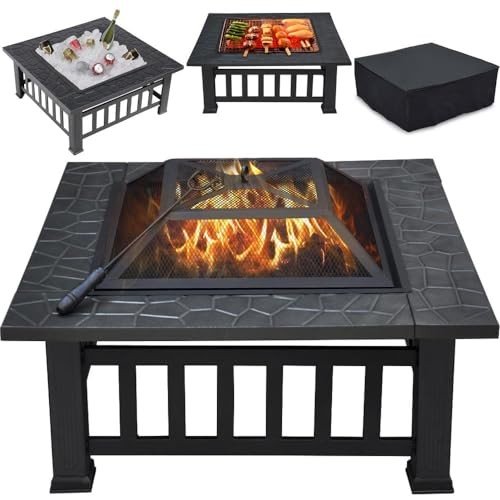12 Facts About Fireplace That Will Refresh Your Eyes At The Cooler Water Cooler
The Charm and Functionality of Fireplaces: A Comprehensive Guide
Fireplaces have actually long been a central feature in homes, symbolizing heat, friendship, and comfort. They can be found in various styles, products, and fuel types, accommodating the preferences and requirements of varied house owners. This article delves into the diverse world of fireplaces, exploring their history, types, installation considerations, and maintenance pointers, while offering FAQs to deal with typical inquiries.
A Brief History of Fireplaces
Historically, fireplaces acted as the foundation for cooking and heating homes. In ancient times, an open hearth was often put in the center of a house. Over Fireplaces Online , architectural improvements assisted in the advancement of more sophisticated styles, evolving from simple stone structures to elaborate mantels that command modern living areas.
Key Historical Milestones:
- Ancient Times: Open fires in caverns and primitive huts for warmth and cooking.
- Middle Ages: Large, commonly centralized chimney structures in terrific halls of castles.
- Renaissance: Decorative mantels and designs gain appeal, with the fireplace ending up being a symbol of wealth and status.
- Industrial Revolution: Advancements in products and producing permit a wider variety of fireplace styles.
- Modern Era: Gas and electric fireplaces become commonplace, permitting increased benefit and security.
Kinds of Fireplaces
Today, numerous types of fireplaces are offered, each with its distinct qualities. Below is a breakdown of the most typical types:
Fireplace Type
Description
Pros
Cons
Wood-Burning
Traditional fireplaces sustained by wood.
Genuine experience, heat output.
Labor-intensive, needs appropriate venting/maintenance.
Gas
Fireplaces that use gas or gas.
Easy to utilize and preserve.
Less atmosphere compared to wood.
Electric
Uses electrical power to produce heat and flames.
Safe, no venting required.
Limited heat output, greater energy expenses.
Bioethanol
Uses bioethanol fuel, producing tidy flames.
Environmentally friendly, portable.
Requires routine refueling.
Pellet
Utilizes compressed wood pellets as fuel.
Tidy burning, sustainable.
Requires power for operation.
Additional Considerations
When choosing a fireplace, it is necessary to think about factors such as:
- Fuel Availability: Consider what fuels are easily accessible in your area.
- Area and Aesthetics: The size of your living area and your style preferences need to direct your choice.
- Building Regulations: Always speak with regional regulations to make sure compliance and safety.
Setup Considerations
Installing a fireplace includes more than simply positioning a structure in your home. Comprehensive preparation, expert input, and adherence to safety codes are paramount. Here are some crucial actions:
- Planning: Consider the size and type of fireplace, where it will be positioned, and its intended use.
- Consultation: Hire a licensed contractor to evaluate your home and make sure appropriate installation.
- Permits: Obtain any essential building permits from regional authorities.
- Materials: Select suitable materials for the fireplace and surrounding location. Guarantee they are fireproof and developed for your fuel type.
Upkeep Tips for Fireplaces
Routine upkeep ensures your fireplace runs safely and effectively. Here are necessary maintenance suggestions categorized by fireplace type:
Wood-Burning Fireplaces
- Chimney Cleaning: Have your chimney cleaned every year to prevent creosote accumulation.
- Inspect for Damage: Check for fractures and damage to the firebox and chimney structure.
- Fire wood Storage: Store fire wood away from your house to avoid pest infestations.
Gas Fireplaces
- Log Inspection: Regularly analyze ceramic logs for fractures and replace if required.
- Vent Cleaning: Ensure that vents are totally free from blockages.
- Pilot Burner Check: Test pilot lights and ignition systems routinely.
Electric Fireplaces
- Cord Inspection: Frequently examine electrical cords for tearing or use.
- Clean Surfaces: Wipe down surface areas regularly to get rid of dust and debris.
- Smoke Detectors: Ensure smoke detectors in the vicinity are functional.
Bioethanol and Pellet Fireplaces
- Fuel Storage: Store fuels in a cool, dry place away from direct sunshine.
- Regular Refueling: Monitor fuel levels and refuel as required.
- Ventilation: Ensure proper ventilation when using these fireplaces.
Frequently asked questions About Fireplaces
Q1: Do I require a license to install a fireplace?
Yes, the majority of towns require licenses for fireplace setups to ensure security and compliance with regional building regulations.
Q2: How frequently should I clean my chimney?
It is advised to have your chimney cleaned up a minimum of when a year, specifically if you use your fireplace frequently.
Q3: Can I convert a wood-burning fireplace to gas?
Yes, many property owners transform wood-burning fireplaces to gas for convenience, however consulting a professional is a good idea to guarantee a proper conversion.
Q4: Do electric fireplaces produce heat?
Yes, electric fireplaces can produce heat; however, their main function is typically for ambiance, making them an appropriate alternative for those who want a fire appearance without comprehensive heating.
Q5: Are bioethanol fireplaces safe?
Bioethanol fireplaces are typically safe when used properly; however, they need proper ventilation, and users ought to follow all maker guidelines.
Fireplaces not only include visual appeal to homes but also offer practical heating solutions. With numerous types, styles, and maintenance requirements, property owners can make informed choices that best fit their needs and way of lives. Whether opting for the appeal of a wood-burning fireplace or the convenience of a gas design, a fireplace can considerably boost a living space's convenience and atmosphere. As the hearth remains a centerpiece in homes, it continues to foster heat, discussion, and connections amongst family and pals.
